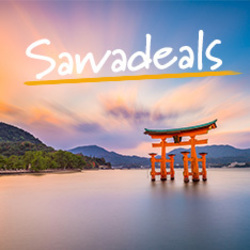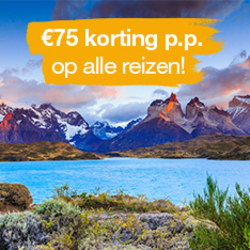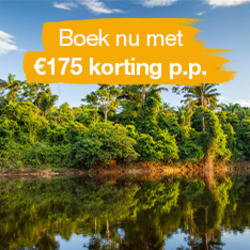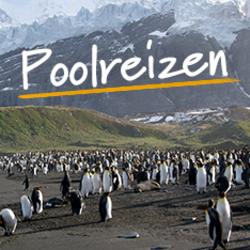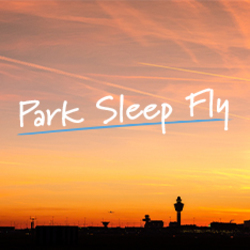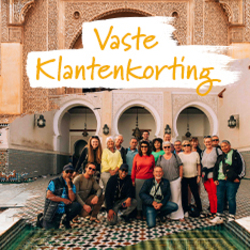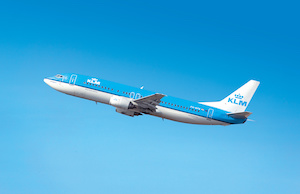Nog 2 dagen!
Bekijk-
1
Fly to Quito.
The group flight usually arrives into Quito this evening. Land Only clients should aim to arrive at the hotel this afternoon/evening. Free transfers are available for all clients. Accommodation: Hotel Vieja Cuba (or similar)
-
2
Quito city tour.
This morning you'll have the opportunity to meet your fellow travellers as we have a welcome briefing and take a guided tour of the main sights in Quito. Quito is the second highest capital in the world, standing at 2800m on the western cordillera of the Andes. It is one of the smaller and more attractive of the colonial capitals of South America. Because of the altitude you are advised to take it easy at first. Accommodation: Hotel Vieja Cuba (or similar)
-
3
Fly to San Cristobal; visit the Galapagos Visitors' Centre.
Transfer to Quito airport and fly to San Cristobal in the Galapagos Islands. On arrival we settle into our hotel and have the opportunity to get a light lunch in the small town before spending some time at the Galapagos Visitors' Centre. This afternoon we hike to the cliffs at Las Tijeteras to see colonies of frigatebirds and there will be time for swimming close to a sea lion colony. Today’s walking distance is approx. 5km Accommodation: Hotel Mar Azul (or similar)
-
4
Walk along Playa Ochoa beach.
Travel by small motorboat to the picturesque Manglaralto Beach, where there is time for snorkelling before we navigate around Kicker Rock (Leon Dormido), an impressive lava tuft formation. Several species of nesting sea birds can be found here, including frigatebirds, Blue-footed and Masked boobies. Continue by boat to Playa Ochoa Beach, an expanse of white sand dominated by a large sea lion colony as well as being home to many birds and marine iguanas. Today’s walking distance is approx. 5km Accommodation: Hotel Mar Azul (or similar)
-
5
San Cristobal highlands walk; snorkelling at Puerto Chino.
After breakfast we drive to the highlands of San Cristobal. A short one hour walk brings us to the fringe of El Junco Lake, one of the few permanent freshwater lakes in the Galapagos where frigatebirds can often be seen bathing near the lake. The San Cristobal highlands offer panoramic views across the smaller islands lapped by the Pacific. Afterwards we visit a reserve where the famous Galapagos giant tortoises roam free before snorkelling in a nearby bay. In the evening, we can visit La Loberia, the perfect place to unwind surrounded by colonies of sea lions and marine iguanas. Accommodation: Hotel Mar Azul (or similar)
-
6
Boat to Floreana; visit sea lion colony.
A three hour navigation by motorboat takes us to Isla Floreana, one of the first islands to be inhabited in the Galapagos. En route we may see whales, dolphins and sea birds. In Floreana we have lunch followed by a walk to discover the black volcanic beaches, which are home to red iguanas and sea lion colonies. Today’s walking distance is approx. 4km Accommodation: Hotel Wittmer (or similar)
-
7
Visit highlands of Floreana; sail to Isabela and visit Las Tintoreras.
After an early breakfast we visit the highlands of Floreana, where one of the few sources of fresh water in the entire archipelago exists. Visit lava caves once used by pirates who based themselves on the islands and see a large enclosure of Galapagos giant tortoises. Just before midday we navigate to Isabela and see Tortuga Island, a huge eroded marine crater where thousands of sea birds such as Blue-footed and Nazca boobies, pelicans and frigatebirds nest. After lunch at Puerto Villamil, we spend the afternoon sailing to the islets and lava channels of Las Tintoreras, one of the best places in the islands to see White-tipped reef sharks, as well as penguins and sea lions. We may be lucky enough to spot the endangered Chatham mockingbird. Today’s walking distance is approx. 3km Accommodation: The Wooden House (or similar)
-
8
Start Sierra Negra Volcano trek.
Today we begin our three day trek around the Sierra Negra Volcano. With its 10km diameter, the caldera of the Sierra Negra is the second largest in the world after the Ngorongoro Crater in Tanzania. After loading our vehicle with all of the equipment and supplies that we need for the next few days, we drive 45 minutes into the highlands to reach the start point of our walk to the volcano on the east side of the island. Our campsite will be pitched up close to the entrance whilst we start our trek towards Volcan Chico. The walk takes us across stark lava-strewn highlands punctuated with miconia shrubs and other vegetation. The otherworldly landscapes are incredible and we pass many volcanic features along the way where we can observe steam fumaroles and a variety of lava formations. Today’s walking distance is approx. 12km Accommodation: Wild Camping
-
9
Continue trek and camp on the rim of the crater.
Today we walk to Volcan Azufre (Sulphur Volcano) whilst our gear is carried on horseback. The trek takes us alongside pastureland which soon changes into highland vegetation with many ferns and interesting plants to see en route. Our camp will be located close to the rim of the crater in a remote area at 900m. With good weather, there are excellent views of neighbouring Volcan Azul (Blue Volcano) and we'll have the opportunity to descend 100m into the crater to see the sulphur deposits, fumaroles and bizarre landscape. Our walk returns 100m uphill to the crater rim. Today’s walking distance is approx. 12km Accommodation: Wild Camping
-
10
To Puerto Villamil via Galapagos giant tortoise breeding centre.
After breakfast we return to the entrance of the Sierra Negra where our vehicle will be waiting to return us to our guesthouse in Puerto Villamil. On our way back we stop at a Galapagos giant tortoise breeding centre, which is home to tortoises of all ages and sizes. Today’s walking distance is approx. 11km Accommodation: The Wooden House (or similar)
-
11
Visit the historical 'Wall of Tears' on Isabela.
This morning we visit the Wall of Tears, a sad reminder of Isabela's very different past when the island was used as a penal colony. Between 1946 and 1959 convicts were forced to build this wall from huge blocks of lava simply as a form of punishment, which, combined with the harsh conditions, led to many deaths. After this sobering visit we hike back to the town through the mangroves, wetlands and along sandy beaches of the coast. This is one of the best places on the islands to view migratory birds, including Wilson’s phalarope, the Blue-winged teal and if we're very lucky, even osprey. This region has also seen the reintroduction of Galapagos giant tortoises from the breeding centre into the wild and we are likely to encounter several on our walk. The afternoon is free for swimming, walking or just relaxing on one of the beaches around Puerto Villamil. Today’s walking distance is approx. 10km Accommodation: The Wooden House (or similar)
-
12
Sail to Santa Cruz; visit Tortuga Bay.
Navigate by motorboat to Santa Cruz and have lunch at one of the local restaurants. Our destination this afternoon is Tortuga Bay, a 1km stretch of white sand regarded as one of the best beaches in the Galapagos. The trail leading to the beach is paved and takes between 45 minutes to 1 hour, with possibilities to observe Galapagos finches and lizards along the way. The beach is scattered with marine iguana's, who lay amongst the clusters of black rocks or stroll along the sand. In the water turtles can sometimes be seen. Swimming is not recommended here due to strong currents. After a relaxing afternoon, we'll hike the same route back towards the main town of Puerto Ayora where our hotel is located. Today’s walking distance is approx. 6km Accommodation: Mainao Hotel (or similar)
-
13
Explore Bartolome, North Seymour or Plazas Island; optional visit to Charles Darwin Research Centre.
Visit either Bartolome Island, South Plaza Island or North Seymour (depending on the National Park restrictions). South Plaza Island has a remarkable vegetation of succulents and cacti that provide a unique habitat for land iguanas. The iguanas form small colonies at the base of the tall opuntia cacti, waiting for their flowers and dead pads to fall to the ground so they can feed on them. The island's rocks are home to swallowtail gulls, shearwaters and sea lions. North Seymour is a flat, boulder-strewn island and is a major nesting site for frigatebirds. It's also a good place to see Blue-footed boobies performing their courtship rituals, as well as sea lions playing in the powerful surf. Bartolome is a spectacular scene of dramatic lava cones, perfect clear turqouise sea and affords perhaps the most famous view of the Galapagos Islands, looking across the red cinder cones to the recent black lava fields on James Island. Back on Puerto Ayora there will be time to visit the Charles Darwin Research Centre which is home to the headquarters of the Charles Darwin Foundation. This is the main research centre on the islands and many visiting scientists come from all over the world to study the flora and fauna. Please note that our schedule for visiting the Charles Darwin Centre is flexible and it may be more convenient for this visit to take place a day earlier or later, depending on timings. Accommodation: Mainao Hotel (or similar)
-
14
Fly to Guayaquil; end Guayaquil.
After breakfast this morning we drive to the airport at Baltra and fly to Guayaquil where it's possible to connect with international flights this evening from 6pm onwards. Alternatively, you can extend your stay for a few extra nights or join the Napo Wildlife Centre Extension (which starts in Quito).




